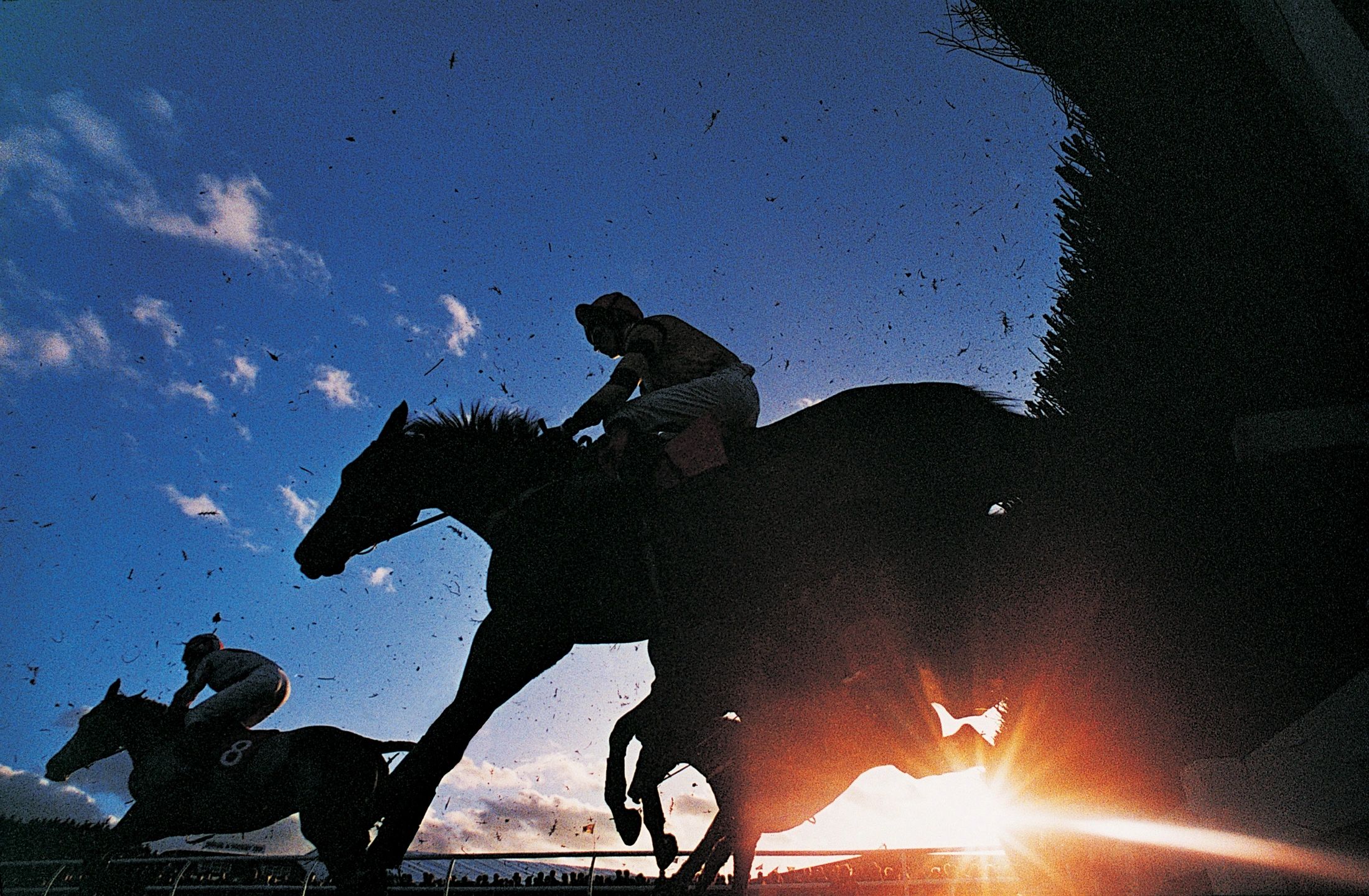
Rinaldo Del Gallo, III
By: Rinaldo Del Gallo
When most people think of the Hall of Fame filly Regret, they think of her as the first filly to win the Kentucky Derby when she did so in 1915 and is so doing may have been the horse that elevated the Kentucky Derby from an important stakes race to the exalted status it has today. But it is not as commonly known that the Kentucky Derby was not the first time Regret beat the boys.
While Sir Barton was the first horse to win the “American Triple Crown,” the term “Triple Crown” as applied to the American Triple Crown was not used until Gallant Fox won in 1930. According to the Courier Journal written by Mike Kane of June 6, 2014, “Although Charles Hatton, the renowned Daily Racing Form columnist, claimed to be the first journalist to use ‘triple crown’ to describe a sweep of the Kentucky Derby, Preakness and Belmont Stakes, research shows that Bryan Field of the New York Times deserves the credit.” Let me take a quixotic attempt to follow in their footsteps and discuss what I call the “Saratoga Triple Crown for Two Year Olds” of the three races, the Saratoga Special, the Sanford, and the Hopeful. I would like to think others will copy this phrase as I tilt at windmills.
Back to Regret—Regret beat the boys Saratoga Triple Crown for Two Year Olds. The first race Regret took was the 4.1 thousand Saratoga Special on Friday, August 8, 2014. The Saratoga Special from its inception to 1993 has always been 6 furlongs until it was made 6.5 furlongs in 1994. The Saratoga Special was literally Regret’s first race, and she equaled the track record.
On Saturday, August 15, 1914, Regret ran in the Sanford Stakes. (August 14, 1914, was also the date the Panama Canal was opened to traffic.) The 1919 Sanford Stakes is perhaps most famous for being the only race that Man O’War lost when he came in second to Upset, making his lifetime record 21:20-1-0. On an interesting side note, Man O’War always shows up in modern pedigrees, Upset regularly shows up in any horse with Rough’n Tumble (Dr. Fager, Fappiano, and In Reality), and occasionally third place finisher Golden Broom shows up in modern pedigrees as well in such horses having Cox’s Ridge blood. It was perhaps no great feat that Regret set a new stakes record for her Sanford win in 1914, for it was only the third running of the race. The 1914 Sanford stands out because it was only one of two times the race was won by a filly. In fact, in 1914 fillies swept the Sanford, taking first, second and third. Nine years later the filly Parasol took the 1923 Sanford (another filly Elvina took second) and no filly has won since. The only filly to place again was the fittingly named Buck the System in 1971, if Pedigree query dot com is to be believed, and it may be wrong given Buck the System’s given birth date of 1983.
The Sanford was not just Man O’War’s undoing by the way. George Smith who ran in the 1915 Sanford had started in 7 races before the Sanford and had won them all—he was 5th in Sanford. Though George Smith ended his winning streak in the Sanford, he went on to win many races such as the 1916 Kentucky Derby. George Smith went on to win the 1918 Bowie Handicap, when he beat Omar Khayyam who was the first foreign born horse to win a Kentucky Derby when he did so in the 1917 Kentucky Derby, and the Hall of Famer Exterminator who had won the 1918 Kentucky Derby. Perhaps it was losses such as in Man O’War and George Smith’s Sanford that has caused Saratoga to be dubbed “The Graveyard of Champions” or “The Graveyard of Favorites.”
On Saturday, August 22, 1914, ran in the Hopeful Stakes, set at 6 furlongs just as the Saratoga Special and Sanford was that year. The Hopeful was upped to 6.5 furlongs in 1925 and 7 furlongs in 1994. It has always been a Grade 1 event since grading was instituted in 1973. Regret swept the Saratoga Triple Crown for Two Year Olds.” Only four fillies have won that race, with Tanya winning the 1914 Hopeful. Tanya became the second filly to win the Belmont when she won in 1905, the first being Ruthless, who took the first Belmont in 1867 some thirty-five (15) years earlier.
Regret went on to have an outstanding albeit somewhat short career. She had an inexplicable Saratoga Handicap where she placed 8th 16 lengths behind the winner, having started off leading the race but then having tired. That would be the only off-the-board performance in Regret’s career. Regret was 2nd to Borrow, losing by a nose in the Jun 25, 1917, Brooklyn Handicap, setting a world record for a mile in her loss, in a race I wrote about entitled “The 1917 Brooklyn: A Race for the Ages,” published by Thoroughbred Daily News on June 5, 2017.
But let’s look at Regret’s two-year-old campaign. She ran three times, won three times and those dates of the races were August 8th for the Saratoga Special, August 15th for the Sanford Stakes, and August 22nd for the Hopeful—three races on three Saturdays in a row at Saratoga. By way of comparison, Man O’War ran 11 times as a two-year-old, running in four 6-furlong stakes races in 1917 at the Spa. Of particular note the 29K purse was the third largest Man O’War ran for, only slightly below the rich 31K Belmont Futurity and the outrageously rich Kenilworth Park Gold Cup purse of 75K which was essentially a match race with Sir Barton. When Regret won the Hopeful the purse was 10K. By way of comparison the Kentucky Derby had a purse of 14k, and the third richest purse Regret ran in was the aforementioned Brooklyn Handicap with a purse of 5.8 thousand dollars. Translation: The Hopeful once had one of the bigger purses on the racing calendar.
The other horses to win the “Saratoga Triple Crown for Two Year Olds” or the “Two-Year-Old Saratoga Triple Crown” are 1916 two-year-old champion Campfire, one of the earliest great American horses that was to descend in tail-male from Bend Or and who defeated the aforementioned Omar Khayyam in doing so; then you have to wait until 1993 champion two-year-old Dehere, and City Zip in 2000. (City Zip is a ½ sibling to Ghostzapper.)
While 13 horses have won the American Triple Crown and 15 have won the British Triple Crown. But only four horses have won the Saratoga Triple Crown for Two Year olds. Which brings me to discuss those dates Regret won it—on three consecutive Saturdays in August. This year’s Spac meeting will again have all three races, but they are run in a different order. Instead of the Saratoga Special being run first on the racing calendar, it is raced second. The Sanford is a Grade III race run on Saturday, July 16th with a $175,000 purse. The Saratoga Special is a $200,000 Grade II race run on Saturday August 13th at 6.5 furlongs, two days shy of a month’s full rest from the Sanford. The Hopeful, a grade 1 and traditionally run on the last day of the Spa meet, will be run Monday, September 5th with a purse of $300,000. The time between the Saratoga Special and Hopeful is three weeks and 2 days (23 days).
This year Mo Strike won the Sanford—now the first race of the Two-Year-Old Saratoga Triple Crown. Despite the Saratoga Special being a full month away from the Sanford, and despite 3 weeks and 2 days between the Saratoga Special and the Hopeful, according to the Paulick Report, “[Trainer Brad] Cox said he will now consider giving Mo Strike a potential start in the $200,000 Saratoga Special (G2) on August 13 but noted the $300,000 Hopeful (G1) on September 5 is more likely.” After Mo Strike won the 107th running of the Sanford, the Saratoga Times Union wrote, “The next logical steps for Mo Strike would be the $200,000 Saratoga Special on Aug. 13 and/or the Grade I, $300,000 Hopeful on closing day, Sept. 5.” What’s with the “and/or”? The logical next start would be the Saratoga Special on August 13th, not 7 weeks and some change break between races. It was only three decades ago that such a long rest would put the handicapper on suspicion that the horse was not sound.
Horse racing is a business. Horses are athletes. It takes time for us to fall in love with them. And we want suspense. Perhaps it makes more sense for Mo Strike to skip the Saratoga Special and wait 7 weeks and 2 days for the Hopeful—but pardon the pun, I want Mo racing. Racing is just an entirely different sport when few of the runners in the Kentucky Derby run in the Preakness, few in the Preakness run in the Belmont, and none run in all three races unless they have a shot at the Triple Crown. It’s boring and much less fun. There is nothing for a local evening new show to get excited about.
For years I have been arguing for a sturdier racehorse. It’s about time. Past the wire more recently reports, “Cox said Mo Strike will now turn his attention to the Grade 1, $300,000 Hopeful on September 5 and will likely skip the Grade 2, $200,000 Saratoga Special on August 13.” Gosh horse racing can disappoint. Racing is so much more interesting when horses that run have racing records and a story.


